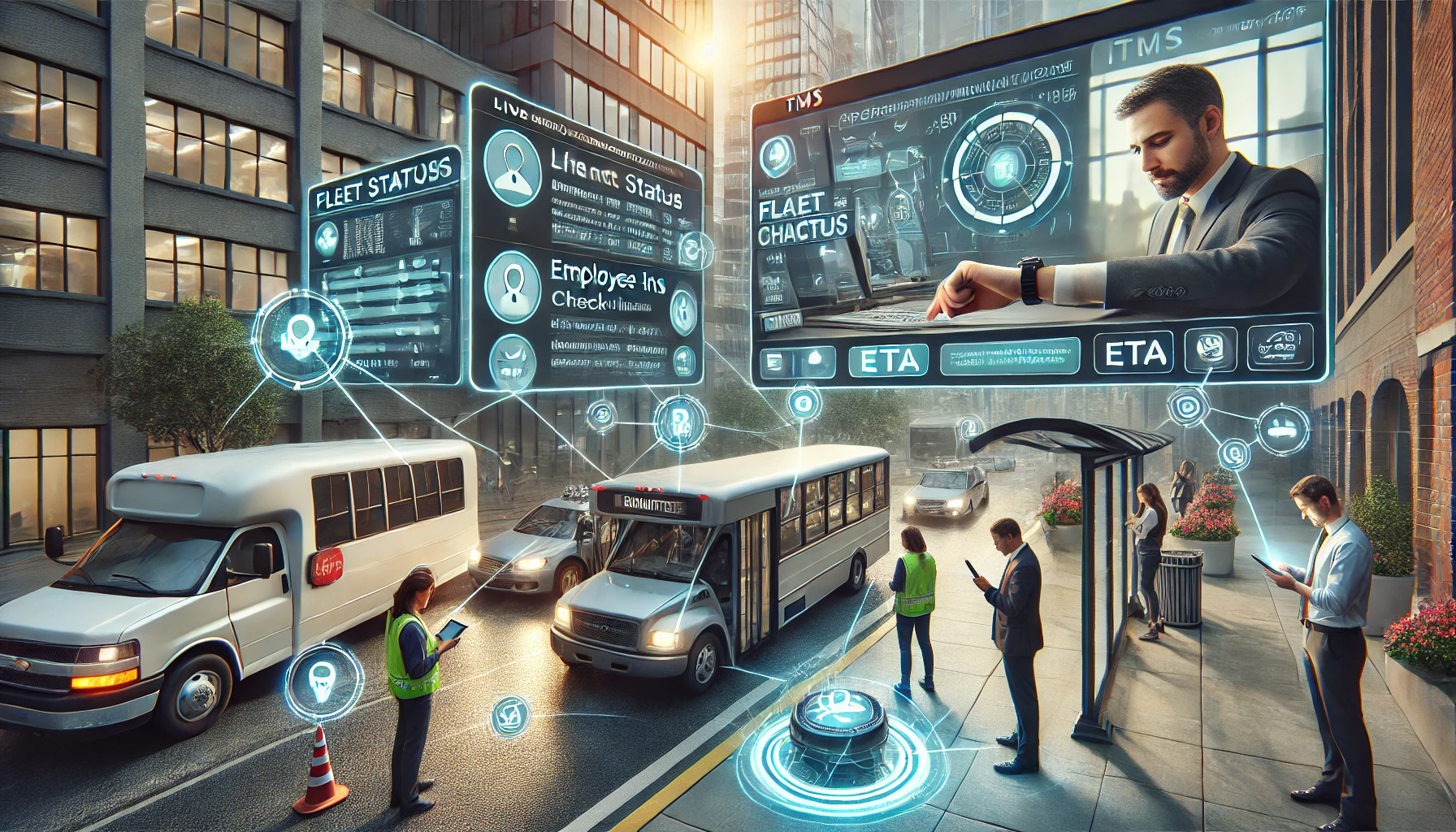Improving Employee Communication within Transport Management: How ITMS Informs All?

Effective communication is the pillar of any effective transport system. Whether it is in terms of transporting the workers to work on time, their safety during transit, or the coordination of logistics involved in the transportation of workers, effective communication between employers, company management, and drivers is essential. Intelligent Transport Management Systems (ITMS) are now revolutionizing how companies manage transportation, and it has become easier to remain connected and updated at all times.
Let's discuss how ITMS increases communication and transport experience overall for employers, company management, and drivers.
1. Real-Time Alerts: Keeping Everyone Informed
Real-time communication is an absolute game-changer for fleet operations. ITMS provides companies with the ability to send real-time push notifications to drivers and employees. These might be important status updates about bus arrival times, route modifications, delays, or even emergency alerts. For instance, if a driver has a traffic delay, employees can be alerted in real-time and adjust their calendars.
To businesses, the alarms allow fleet administrators to see the fleet status in real time. Pro-activity and foresight on issues such as unauthorized delay, maintenance, or route diversion are then manageable to pre-empt and forecast by managers without interfering much with work time.
2. Pick-Up Notifications: Making the Process Simpler
One more key function of ITMS is that it reminds employees by sending pick-up notices. By providing accurate and on-time information on pick-up place and time through ITMS, it allows the employees to organize their day much better.
To employers, such notices give a guarantee that workers will be dropped off and picked up on time with no added delays. It also guarantees that inefficiencies within the process, i.e., employee-driver communication misfits concerning pick-up place or time, are removed. An employee may receive notice prior to being picked up so they are ready and waiting when the vehicle arrives. For large companies with multiple pick-up locations, this can reduce wait times and overall satisfaction with the transport service significantly.
3. Driver Apps: Making it Easier to Communicate with Drivers
Proper functioning of the employees' transport administration is dependent upon proper communication with drivers. At ITMS, drivers are made available with mobile apps which provide them with the information they need in terms of daily routes, schedule, and advance announcements.
From the apps, the drivers can:
- Learn updates up to minutes old of their route and pick-up spots.
- In real-time, understand the current traffic updates, mishaps, or road closures.
- Direct communication with the transport coordinator or fleet manager immediately in the event of breakdown or delays.
The driver app is a center of information, informing drivers and placing them in a position to report any news or issues to employers or employees in real-time.
Assume that a driver receives a notification through the app that a particular road is closed due to an accident. The driver can immediately inform the fleet manager, and the fleet manager can communicate with employees through a notification so that all are informed about the new route or travel time.
4. Employee-Driver Communication: A Two-Way Street
One of the major benefits of ITMS is that it allows for two-way communication between drivers and employees. Previously, employees needed to relay messages through supervisors first before they could be communicated to drivers, with this leading to delays and causing possible miscommunication. With ITMS, however, employees can communicate directly with drivers using the system's platform, and this leads to an improved experience of transportation for both parties.
Not only does this system maximize employee satisfaction, but it also optimizes operational efficiency. Drivers can confirm pick-up times easily, inform employees of any change, and provide a real-time alert of arrival status. This open communication line reduces frustration for employees and allows drivers to make changes on the move if necessary.
The employee can realize that he/she is running late and notify the driver via the app. The driver can make a slight alteration to the route or timing so that the worker is not abandoned. This adaptability improves workers' satisfaction and reduces the chances of delays.
5. Post-Trip Feedback and Continuous Improvement
ITMS also allows workers to give feedback about their transportation experience, further improving communication. Employees can rate the service after the ride, report any problems, or indicate improvements. This kind of feedback benefits companies since it will point out areas that need improvement, whether the route, vehicle quality, or conduct of drivers.
This is crucial to the employers' ongoing improvement of the transport experience. It enables a culture of accountability, and problems are solved early if they do not affect more personnel. One week after transport, the employees can give a rating for the professionalism of the driver or the comfort of the vehicle. Based on this feedback, ITMS can make fleet adjustments, such as refreshing vehicles or offering additional driver training to provide a better experience for everyone.
Conclusion:
ITMS application in employees' transport is a company game-changer in facilitating companies to move forward with communication, productivity, and the employee experience. Through real-time notifications, pick-up reminders, driver apps, and feedback loops, ITMS informs, engages, and prepares to react to problems in real-time.
At Arena Softwares, we understand that ITMS not only optimizes the logistics of employee transportation but also optimizes the experience for employees and the company as well. With communication enhancement, organizations can have employees' transportation be efficient, safe, and on time, and save money and streamline operations while they're at it. It's a win-win solution that yields better results for employees and the companies as a whole. Get in touch with Arena Softwares.
